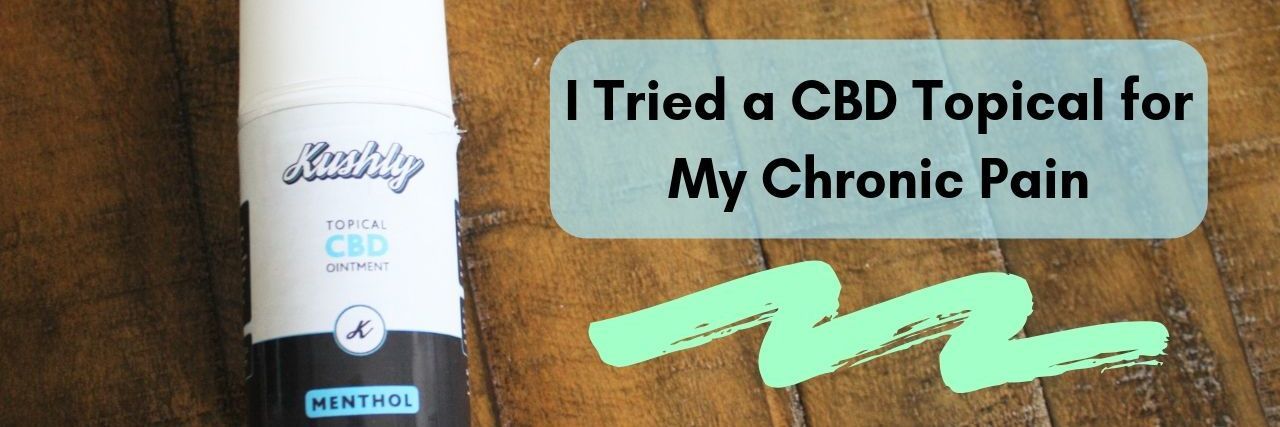I Tried a CBD Topical for Chronic Pain. Here's What Happened.
Editor's Note
Any medical information included is based on a personal experience. For questions or concerns regarding health, please consult a doctor or medical professional.
The Mighty received a review unit free of charge.
Hi, I’m Veronica. I live with myofascial pain syndrome and fibromyalgia. I’ve spent the past 10 years of my life living with chronic pain, specifically in my back, shoulders and neck. Four years ago, I had a breast reduction to help relieve some of the pain. I’ve spent more than a third of my life trying to figure out what type of pain management works and doesn’t work for me.
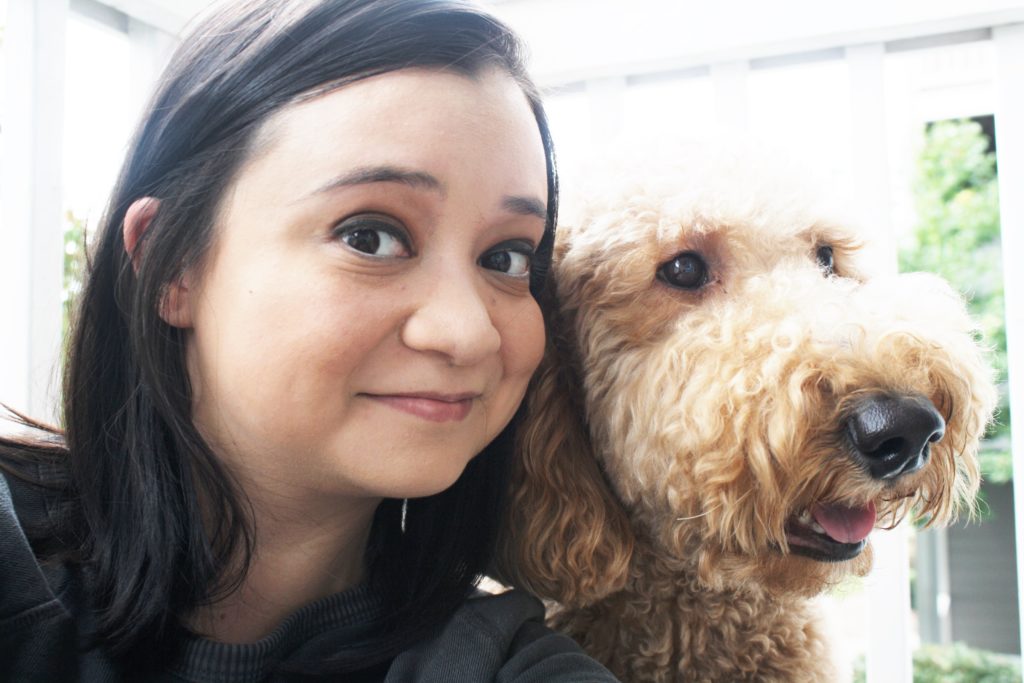
That’s me with my dog. His name is Potato.
All About CBD Topicals
There are a lot of options when it comes to treating chronic pain and I’ve tried plenty of them. One thing I hadn’t really tried before was a CBD topical. I’ve tried over the counter topicals like Bengay and Biofreeze, but never one with CBD in it.
CBD or cannabidoil is a type of cannabinoid found in cannabis. CBD is non-psychoactive, and legal in the U.S. when derived from the hemp plant. Despite its legal status, it is only FDA-approved for treating rare types of epilepsy, though a growing body of research suggests it can help anxiety, insomnia and chronic pain.
There are many different ways to use CBD. I recently started taking CBD oil orally to help with pain at night but wanted a daytime option too. I was curious if CBD topical would work for my daily life.
According to Michele Ross, Ph.D., a neuroscientist and cannabis expert who writes for The Mighty, CBD topicals are a great option for someone like me. “CBD topicals can provide pain relief without having to ingest CBD, which is great for someone that might be on medications that might interact with CBD or is just a fast metabolizer of CBD, like me,” Dr. Ross explained. “CBD is great for arthritis, joint pain, back pain, tension headaches, sports injuries, fibromyalgia, pelvic pain, and so much more.”
As someone who sits at a desk staring at a screen all day (in a chair that’s not meant for someone with chronic pain I might add), I need something that works long-term and has a pretty significant effect. Ross said if you use a CBD topical regularly, you’ll have a better chance at finding pain relief. She added:
While there is some immediate pain relief, the biggest win is consistent, daily use. CBD is anti-inflammatory, and over time, it can help reduce the source of the pain. For the biggest benefit, I suggest patients use both CBD topicals and CBD tinctures so it’s working on pain on the outside and the inside.
But just like anything else, a CBD topical isn’t a guarantee. So why could it potentially not work for me? Ross pointed to three different options:
- The dosage in the topical could be too low.
- There’s something weird going on with the ingredients, such as it lacking what the topical needs to actually get into my muscles.
- My pain is too severe for CBD alone. (She recommended trying one with THC if that’s the case.)
But what about all those naysayers who say CBD is bad and will have a negative affect on me? Should I be worried? The short answer is no, according to Ross:
CBD topicals won’t get into your bloodstream, so they are much safer to take than other products. There’s no side effects or potential drug interactions when taking CBD topicals. Any negative reactions to CBD topicals come from the other ingredients in them, like artificial dyes or fragrances.
The Experiment
I decided if I was going to try this, then I had to commit. The plan was to use the product whenever I have neck pain, regardless of what I’m doing. That means I’ll use it whenever I have a flare-up, am overly sore or just in need of some relief. That’s the life of someone who lives with chronic pain: it’s hard to find a moment when I don’t need some sort of help.
I’ll be using a topical CBD ointment from Kushly that contains menthol. I’ll be looking to see if the product reduces my pain and improves my mobility throughout the day. I didn’t pick menthol specifically; it’s just something Kushly uses in its products. Be careful if you use topicals containing menthol, Ross cautioned.
“[Menthol] can provide cooling relief, but it can also burn your eyes if you accidentally touch your face before washing your hands,” she said. “So please don’t put a CBD topical with menthol in it near your eyes, nose, mouth, vagina, or rectum.”
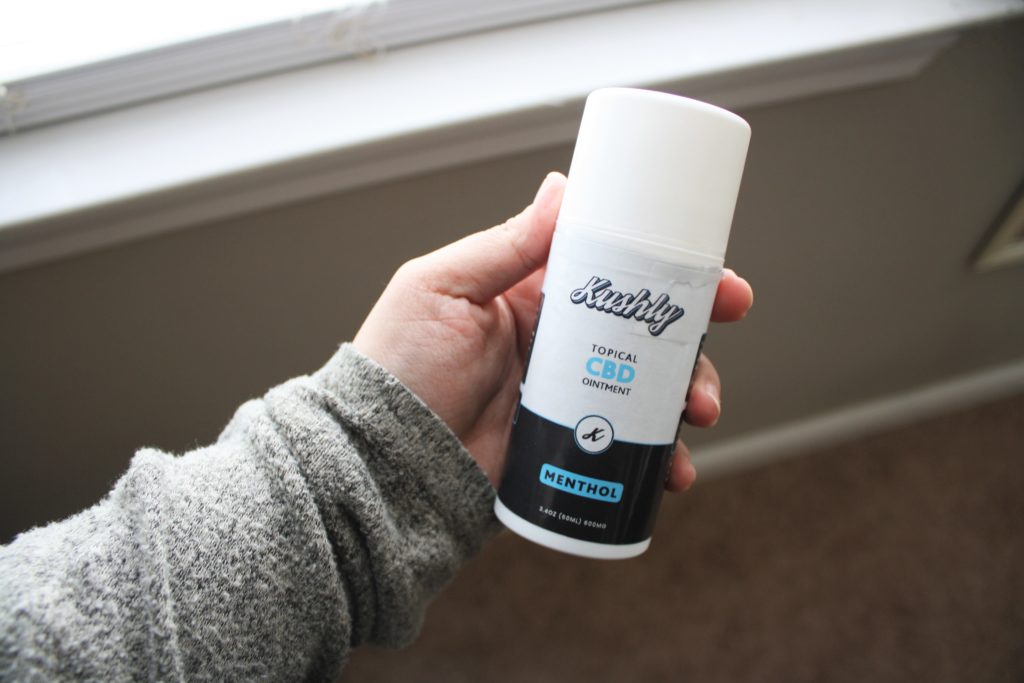
The plan is to try and use it consistently for a week. I’m not sure if a week will be enough, but I want to see if there’s any improvement after a week’s time. If there is, then I’ll be more confident using it long-term.
How It Went
Day 1: It feels like any other topical. I used it while I was working. I was sitting in a strange position for over an hour at my desk and didn’t even realize it until it was too late. My neck was killing me, so it felt like a good time to try it. It was helpful, but nothing special compared to something cheaper I could buy at Target.
Day 2: I woke up with neck and shoulder pain. I probably slept weird, I tend to do that sometimes. I find a position that’s comfortable, but the position ends up hurting me the next day. I used the topical after I showered. Well, not exactly after. I’ve had problems with putting on topicals after showers and I’ve ended up burning myself. I waited a little bit, then used it.
It felt like it lasted longer than other topical and was different than the day before. It wasn’t a crazy different though. I wasn’t singing my praises to the CBD gods or anything like that. But it was pretty cool to get some relief from a topical instead of something like pain medication.
Day 3: No change from yesterday. I used it while working. I might have been so focused on my deadline that I didn’t take the time to realize that I should stop and think if the topical was doing anything for me. But that might say something itself.
Day 4: OK, I actually think there might be something to this whole CBD topical thing. There’s something about it that feels different compared to other topicals. It feels like it actually gets into my muscles rather than just sitting on top. Plus, it lasted awhile today. I applied it in the morning and by the afternoon, I still felt pretty good. Pessimistic me would probably just say it was a coincidence, but I actually don’t think it was. Interesting.
Day 5: Hi, my name is Veronica and I really like CBD topicals. It benefits me a lot. I can say that with some confidence now.
I actually put on more today than I probably should have and it made a giant mess. (See photo below.) I should also point out I’ve been noticing it tends to stick to me for longer than other topicals. Hours after having putting it on, I touched my skin and it felt sticky. It’s not like an “I just put this on” sticky. It’s more of like an “Oh, that’s still kind of there” sticky. Makes it hard to wear my hair down.
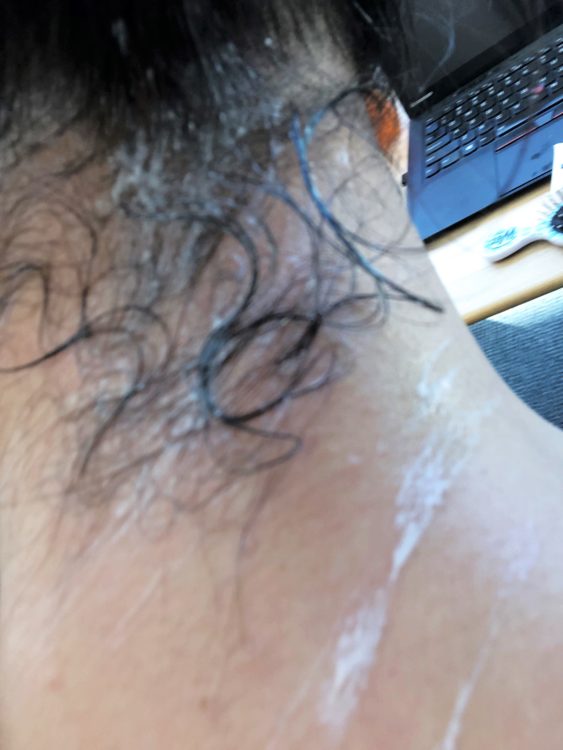
Yeah, ew. Gross.
Day 6 and Day 7: I don’t really notice much, but I think it’s because I’ve just incorporated this into my routine now. I didn’t think twice when using it this weekend. I put it in my purse when I went to the bar and used it like I would any other topical. Except now, this topical is the one I’m drawn to. It’s the one that I want to keep with me whereas my previous topicals are now just backups.
My Final Thoughts
All in all, I would recommend this product. CBD works for me, so I’m not surprised I like using it in topical form. It gets into my muscles more and gives me some relief. Is it the best thing ever worth stopping all my medications to use it? Um, no. Not at all. However, it’s great to keep in my back pocket and has become part of my regularly used products. It joins my muscle relaxers, heating pad and CBD oil. They make a great team.
That being said, there is a downside to this. CBD is expensive in general, and this topical is no exception. At $74.50, I’m trying to figure out how I’m going to make this work. Though the price is fairly standard compared to other CBD products, it’s eight times more expensive than the non-CBD topicals I’d buy at the drug store. It would help if my insurance would cover it, but of course, insurance companies don’t cover over-the-counter CBD products yet. That’s a negative for sure, but has nothing to do with the topical itself and more to do the federal government’s classification of cannabis.
The only other downside is the effort. Dr. Ross pointed out that CBD topicals need to be reapplied about every three to four hours. It takes a lot of effort to apply a topical in general. I would start to procrastinate, telling myself to put it on, but dreading to lift my arms and stretch to apply it. I wish it came in a spray form or something. Once I had it on, I was happy I put the effort in.
There are also a few mistakes that I made. I think I focused too much on my neck. I didn’t even try it on my back because it is only third on my list of body parts that hurt. (One is my neck and two are my shoulders.)
If you want to use topicals, Ross advises making sure you cover all pain areas. “The most common mistakes when using CBD topicals are not using enough topical to cover the entire area of pain, not massaging it in/helping it absorb so it just rubs off on your clothes and not using it often enough,” she said. I was guilty of all of that.
I plan on using this in the future, so long as I can afford it. I think it’s worth the price, but I worry about spending so much money on just one aspect of my care. One thing’s for sure though: CBD topicals do benefit chronic pain and they do provide more than your average, run of the mill topical.
If you are interested in trying Kushly’s CBD topical, you can buy it here.
Rating: 4/5
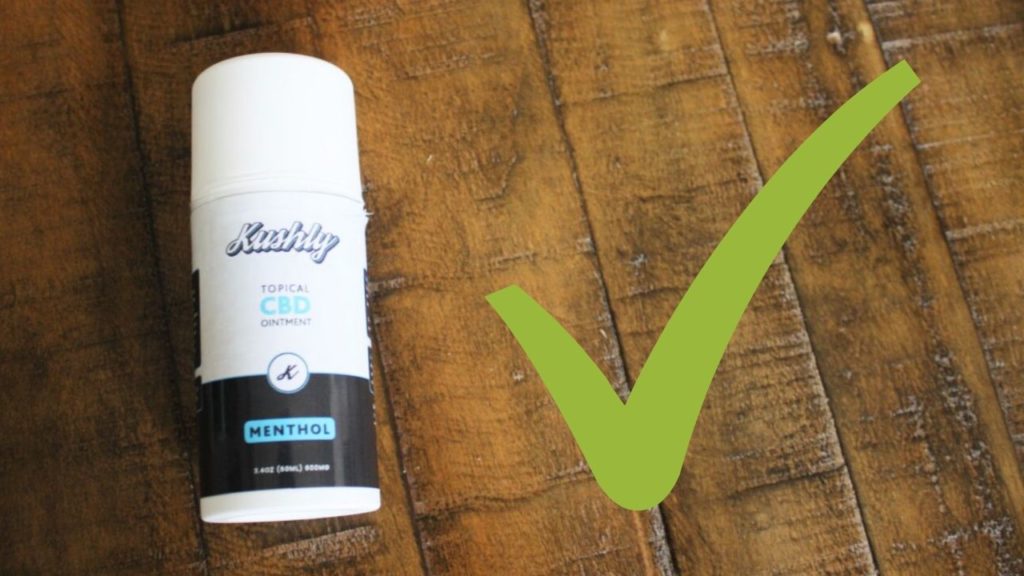
Have you tried a CBD topical? Let us know in the comments how it worked for you!
For more information on CBD, check out these articles:

